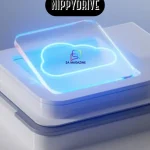Access to software has become an essential factor in education today. As technology permeates the academic landscape, students and educators seek ways to enhance their experiences in learning, teaching, and managing administrative tasks. With numerous software tools and applications at their disposal, the challenge often lies in ensuring seamless access to these resources. This article explores the aspects that make software access easier for students and educators, highlighting how innovative solutions can transform the educational environment.
User-Friendly Interfaces
Software accessibility hinges significantly on its design, and user-friendly interfaces stand out as vital features. When software is intuitively designed, students can navigate through features with minimal guidance. Rather than spend valuable time figuring out complex menus, they can focus on learning and utilizing the tools effectively. A streamlined interface reduces anxiety and frustration, especially for younger students or those with less familiar experience with technology.
Educators benefit from user-friendly software as well. Teaching tools that are easy to use allow educators to spend more time engaging with students and less time troubleshooting issues. A well-designed interface encourages faculty to explore innovative methods of instruction, knowing that the technology will not hinder their efforts. With literacy levels in technology on the rise, investing in user-friendly software reaps dividends for teaching and learning.
Flexibility of Access
Flexibility in access is paramount in education, especially in a world where remote learning has become increasingly common. Cloud-based software enables users to access applications seamlessly from any device, whether a laptop, tablet, or smartphone. This capability bridges the gap between home and school environments, ensuring that students can continue their work outside traditional classroom hours. With platforms such as AppsAnywhere, students can access and complete from anywhere, fostering creativity and collaboration. This flexibility has redefined the educational experience, making learning more inclusive and adaptable to individual needs.
Integration with Existing Systems
When educational software can connect with learning management systems, administrative databases, or other digital platforms, it streamlines processes and reduces duplication of efforts. This is particularly beneficial for students and educators, who often juggle multiple tools during their responsibilities. Integrative features improve efficiency by enabling users to manage resources within one ecosystem, minimizing the need to switch between applications.
This saves time and promotes a fluid learning environment where students can focus on their tasks without technical interruptions. The software has features that can integrate seamlessly with various existing systems, allowing educational institutions to consolidate their tools into a single, cohesive platform. This integration also ensures that updates, security patches, and access controls are managed centrally, providing a streamlined experience for all users.
Customization Options
Personalization plays a key role in making software accessible and effective. Customization options allow users to tailor the software to meet individual preferences or requirements. This adaptability can significantly enhance the user experience, making learning more engaging for students struggling with a one-size-fits-all approach.
When educators can customize their software tools to fit the unique needs of their classrooms, it fosters a more dynamic learning environment. They can modify settings, create specific assignments, and select resources aligned with students’ varied learning styles. By incorporating this level of personalization, software not only becomes more accessible but also more relevant to the user’s context, facilitating better educational outcomes.
Comprehensive Support and Training
Comprehensive support and training resources are essential to maximize software accessibility. When students and educators have access to ample tutorials, help documents, and responsive customer service, they experience fewer frustrations. Support structures reduce barriers to entry, ensuring that users become proficient with software functionality.
Educators, in particular, often require ongoing training to keep up with evolving technologies. Providing workshops or support networks helps them remain effective in their teaching methods. When training is readily available, it empowers educators to leverage technologies fully, which can lead to more innovative and effective educational experiences for their students.
Cost-Effectiveness.
Cost can be a significant barrier to accessing software in educational settings. Providers that offer free or discounted licenses to students and educators ensure that crucial tools are within reach for all users. When budgeting can be tight, especially in public schools or community colleges, cost-effective solutions allow institutions to invest in essential software without straining their finances.
Educational institutions can adopt software that enhances learning environments by reducing financial barriers. Students need access to professional-grade tools, like design software, coding platforms, or advanced analytical applications, to prepare for future success. Ensuring affordability enables more equitable access to high-quality resources, raising the educational standard for all.
By focusing on user-friendly designs, flexibility, integration, customization, support, and cost-effectiveness, educational institutions can create an accessible environment for students and educators. These features not only serve to improve the technology experience but also help foster an engaging learning atmosphere. Embracing and implementing these aspects can catalyze a more effective education framework, positioning students and educators for greater success.







